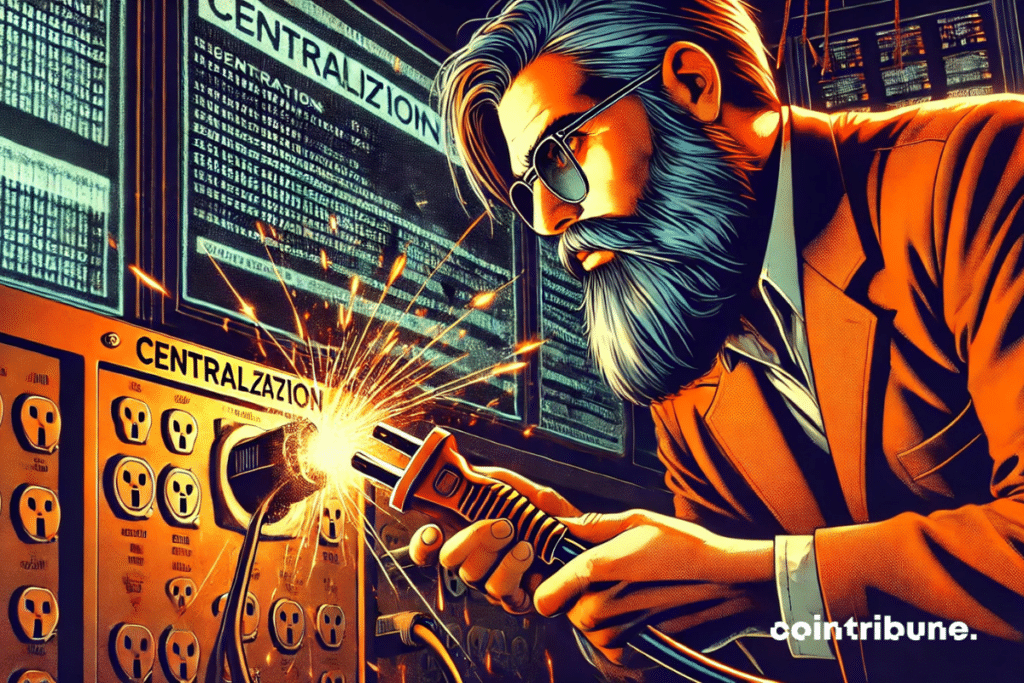Is Solana Going To Sacrifice 57% Of Its Validators To Survive?
The Solana Foundation is adopting a new policy that will gradually phase out validators with low external participation. This initiative aims to strengthen the network’s decentralization while addressing concerns regarding validators’ dependence on foundation support.

In Brief
- For each new validator added, three long-term validators with low external stake will be removed.
- Research shows that 57% of Solana validators could fail without delegation from the foundation.
- Increased validator autonomy strengthens the network’s Nakamoto coefficient.
A New Approach to Strengthen Solana Network Autonomy
The Solana Foundation announced a major shift in its delegation policy. Ben Hawkins, head of the staking ecosystem at the Foundation, revealed on Discord that a selective elimination system will be implemented.
For every new validator joining the delegation program (SFDP), three validators will be excluded if they meet two conditions:
- have been eligible for delegation for at least 18 months;
- have attracted less than 1,000 SOL in external stake.
This strategic decision comes as the portion of stake delegated by the Foundation has been gradually decreasing since 2022. The goal is clear: to encourage validators to develop their own participant base rather than relying solely on institutional support.
The new policy also addresses criticisms raised by Kydo, head of special projects at EigenLayer.
He had expressed concerns regarding the network’s transparency, stating that the majority of Solana validators “exist only because the Solana Foundation created them” and that they “receive 90 to 100%” of their staking funds from the Foundation.
Challenges to Overcome for Sustainable Decentralization
A study published by Helius in August 2024 highlights the scale of the challenge: if the delegation program abruptly stopped, 57% of Solana validators would become unprofitable. These operators would no longer be able to cover their operating costs, mainly consisting of network voting fees.
Max Resnick, chief economist at Anza, pragmatically supports this approach:
Many validators today who are independent started thanks to the SFDP program. Focusing solely on the total number of validators is misleading – low participation validators actually harm network performance.
This development is part of a broader plan for Solana. Other significant changes are underway, including the Galaxy Research MESA proposal to adjust SOL inflation. Meanwhile, the market eagerly anticipates the Solana ETFs expected in June 2025.
The growing autonomy of validators directly improves Solana’s Nakamoto coefficient, a crucial metric measuring the network’s effective decentralization. The higher this coefficient, the better the blockchain resists centralization risks, thereby enhancing its security and credibility with institutional investors.
Maximize your Cointribune experience with our "Read to Earn" program! For every article you read, earn points and access exclusive rewards. Sign up now and start earning benefits.
Passionné par le Bitcoin, j'aime explorer les méandres de la blockchain et des cryptos et je partage mes découvertes avec la communauté. Mon rêve est de vivre dans un monde où la vie privée et la liberté financière sont garanties pour tous, et je crois fermement que Bitcoin est l'outil qui peut rendre cela possible.
The views, thoughts, and opinions expressed in this article belong solely to the author, and should not be taken as investment advice. Do your own research before taking any investment decisions.